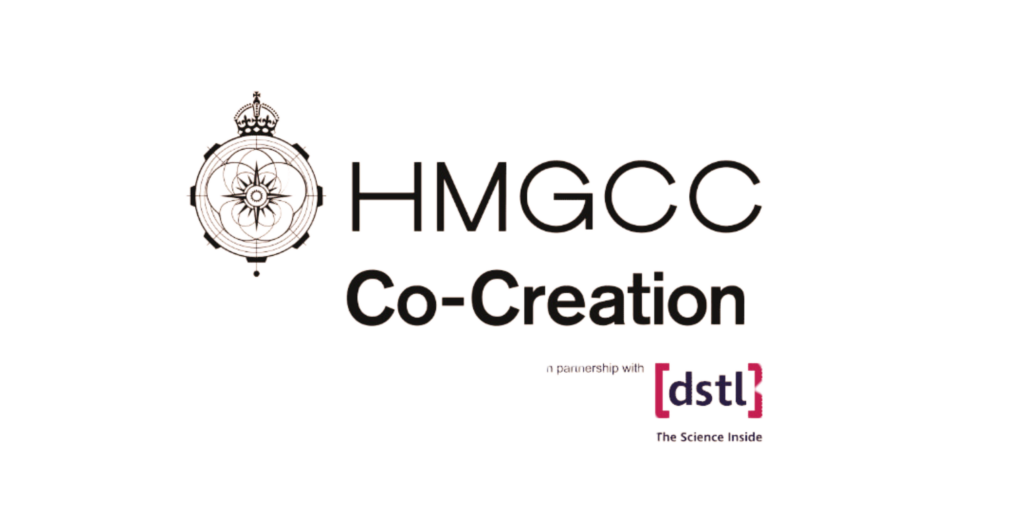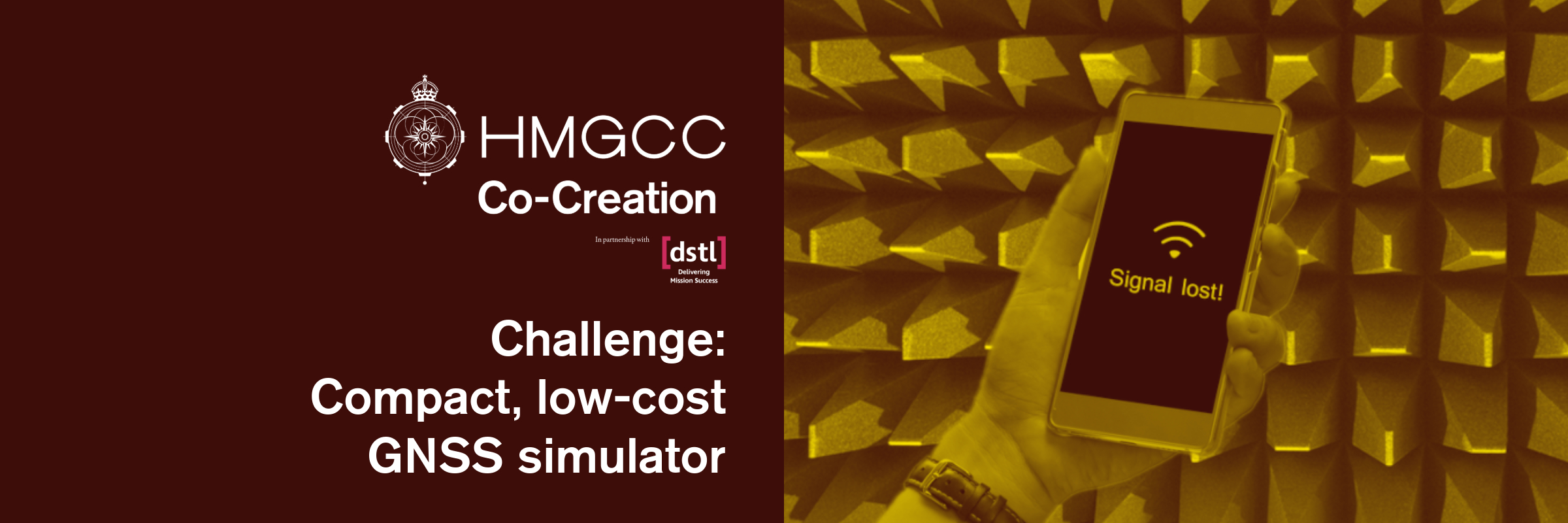
HMGCC Co-Creation is seeking Global Navigation Satellite Systems (GNSS) simulators to support testing of multiple communication systems at the same time.
In this challenge, we want to hear from organisations which have developed, or can develop, compact and low-cost systems to replicate real-time global GNSS constellations.
Organisations are being asked to apply if, over a 12-week period, they can develop and demonstrate technology to meet this challenge. HMGCC Co-Creation will provide funding for time, materials, overheads and other indirect expenses associated with this challenge.
The challenge
Context of the challenge
The UK national security and defence community operates globally, often in contested environments and conflict zones. Many communication systems rely on GNSS for position, navigation and timing signals.
To ensure the reliability of these systems, it is crucial to first test them in the most realistic environments possible. Typically, the technology needs to be portable and pocket-sized to meet the requirement. Due to limited access to trials in real world locations, testing is typically carried out in radio frequency (RF) shielded rooms to replicate these environments.
The gap
There is a gap in the market for a compact, full constellation simulator which is lower in cost, compared to other, currently available solutions. To test physical devices effectively, a realistic and real-time GNSS simulation is necessary, which is not limited to GPS but also includes other constellations like Galileo, GLONASS, BeiDuo, QZSS and NavIC.
Example use case
Marianne is developing a tracking product to be used in a contested area where those working for national security could be at risk of capture. In these cases, a product of this type could enable their location to be known. There needs to be a very high assurance that it will operate as intended when deployed.
The test facility has no access to GNSS constellations, so Marianne, a test engineer, needs a GNSS simulator to show how the tracking device would work anywhere in the world. The simulator must be able to use any set of GNSS constellations, not just those available in the UK.
She tests ten of her devices in a shielded container to determine whether the assurance requirements are met using a range of constellations. She is able to remotely programme different global locations dynamically and assure herself that the devices are accurately reflecting real-time GNSS constellations.
Thanks to this capable simulator, processes are easy to follow, efficient and provide assurance to test results.
Project scope
In this 12-week project, applicants should aim to deliver a high Technology Readiness Level (TRL) device. We expect existing technology to be adapted for this use case, with a focus on building a functional final product that can be purchased at low cost.
There is potential for wider commercial applications in automotive, aerospace, and consumer electronics, and we welcome commercialisation efforts.
This challenge is open to TRLs 6 – 9. We recommend that proposals include both the existing and expected TRL at the end of the 12-week period. The essential, desirable and stretch targets are listed below.
We are open to either:
- All elements within a portable form factor (ideally within the footprint of H 207mm x W 130mm x D 220mm).
- A single transmitter within the shielded environment but with a remotely hosted appliance for signal generation.
Essential requirements for solution:
- Must be as compact as possible.
- Must provide real-time simulation of GNSS full constellations using genuine data.
- Uses standard IP over ethernet interface for networking purposes. Ethernet or RF over fibre are also acceptable solutions.
- Must relay genuine Ephemeris and Almanac data (to enable A-GPS services). TLE data does not meet the requirement.
- Must be powered through UK standard 3-pin plug or by standard USB port.
- Must be either compliant or working towards UK electrical/RF safety standards.
- Has ability to feed NMEA standard data format.
Desirable:
- Scalable to generate up to 100 discrete GNSS signals.
- Trade-off of complexity and final product cost against functionality, e.g. could focus on a single GNSS system if there is an implication on cost.
- Final product cost in the order of £5000.
- Low power solution.
- Avoid containing export-controlled material (e.g. ITAR software/hardware).
- Use of SMA connectors for RF solutions.
Constraints:
- Must operate in a RF shielded room.
Not required:
- Horizon scanning only.
- No virtualisation or digital twinning.
- In a final product, testing data (used for AI training for example) would not be possible to share back with the solution provider.
Key dates
Monday 7 July 2025
Competition opens
Tuesday 22 July 2025 at 11:00am
Clarifying questions submission date
Tuesday 29 July 2025
Clarifying questions published
Thursday 7 August 2025 at 5:00pm (UK time)
Competition closes
Tuesday 26 August 2025
Applicant notified
Thursday 4 September 2025
Pitch day in Milton Keynes
Thursday 11 September 2025
Commercial onboarding begins*
*Please note, the successful solution provider will be expected to have availability for a 1-hour onboarding call via MS Teams on the date to be specified to begin the onboarding/contractual process.
Monday 6 October 2025
Target project kick-off
Eligibility
This challenge is open to sole innovators, industry, academic and research organisations of all types and sizes. There is no requirement for security clearances.
Solution providers or direct collaboration from countries listed by the UK government under trade sanctions and/or arms embargoes, are not eligible for HMGCC Co-Creation challenges.
